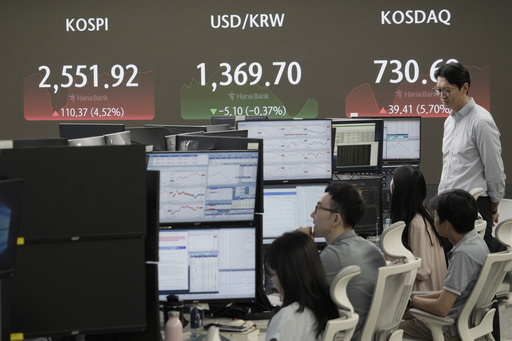The recent turmoil in global markets was partly fueled by a financial strategy called the “carry trade.” This strategy involved borrowing funds in a low-interest currency, like the Japanese yen, to invest in higher-return assets in another currency, such as U.S. stocks or bonds. However, a combination of factors, including fears of a U.S. recession and concerns about overvalued technology shares, led to a rush to sell off assets tied to the carry trade.
Carry trades rely on interest rate differentials between countries, and the Bank of Japan’s decision to raise interest rates last week caused the yen to strengthen against the dollar. This forced traders to sell off riskier assets to cover their borrowing costs and offset losses from currency exchange rate shifts and declining asset values.
Carry trades can have a significant impact on markets, especially when a large number of traders unwind their positions simultaneously. As traders scrambled to buy back yen and other currencies involved in carry trades, they were compelled to sell off higher-risk assets quickly, exacerbating market volatility.
The future risks associated with carry trades depend on interest rate differentials between countries. The divergence between Japan’s low interest rates and the U.S. Federal Reserve’s higher rates is expected to narrow as the Fed potentially cuts rates and Japan increases its rates. While markets showed signs of stabilization after the initial turmoil, analysts are divided on whether the worst is over or if more volatility lies ahead.
Carry trades have a long history of impacting financial markets, with past instances leading to crises in countries like Iceland. As seen in the recent market turbulence, currencies like the Mexican peso have also been affected by movements in carry trades. This trading strategy, while potentially lucrative, carries inherent risks and is likely to remain a factor for investors during periods of market instability.


